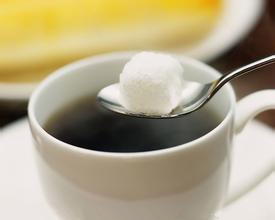Those things related to coffee. Basic knowledge of coffee.

Starbucks founder and chairman Howard Schultz wrote a book called It's All About Coffee. However, in Pu 'er City, Yunnan Province, China, which is famous for making Pu' er tea, it can be said that this sentence is reversed. What is happening is "all related to coffee."
Over the years, Pu 'er has become the most important coffee bean making place abroad, and the driving force in front of it is equal to two famous multinational giants-Starbucks from the United States and Nestle from Switzerland. The latest development is that Nestlé invested 100 million yuan in Pu 'er coffee periphery, which is another major investment after many years of deep cultivation in Yunnan. What is most needed is that Nestle will promote the withdrawal of Pu 'er Coffee, a new coffee product named after Pu' er as the original manufacturing place. In other words, when our ancestors mentioned Pu 'er, they imagined not only tea, but also coffee.
In contrast to what should be, it is no longer dynamic for tea farmers to cut down tea trees and coffee. In Yunnan local government planning, tea planting area will also become a stock market, by 2017 guaranteed at 6 million mu, no longer added; coffee cultivation area is the first to double expansion.
With the expansion of multinational giants in China and the popularity of coffee civilization, the demand for coffee beans will continue to rise in the coming years. According to brazen information, Starbucks plans to open 1500 stores in China by 2015. When Nestle is still frequently deployed in Yunnan, Starbucks is not willing to lag behind. In early 2012, Starbucks signed a contract with Yunnan Aini to form a joint venture company. Its first Chinese coffee grower agreed to settle in Pu 'er City a few days ago. Starbucks also signed a memorandum of mutual assistance with foreign governments to deal with coffee.
Is this a cause for concern? From the local authorities point of view, this is normal, because coffee cultivation is easier to make farmers rich. Pu 'er City has also specially set up an organization called Yunnan Province Pu' er City Coffee Wealth Development Office. Local authorities believe that the tea economy is a pillar industry, coffee is a specialty industry, both open bow. Existing media coverage has also largely dispersed the perspective on how emerging coffee producers are producing alms to farmers to increase payments, meaning both proactive and positive.
To this sign to withdraw exclamation, and signal the Chinese farmers to create, but some "suffer from low prices and sell good" foreigners. The Los Angeles Times was one of the first foreign media to pay attention to this phenomenon, pointing out that "the test of the hub lies in whether Chinese farmers can accept the strong price of coffee." This year coffee growers are getting about $1.20 a pound, half what they were getting two years ago."
Those who have been to Pu 'er City will see that at the door of the local branch of multinational companies, there is an immediate purchase price for coffee beans. The benchmark of this price actually comes from the futures market in New York. Starbucks also revealed when it set up a foreign joint venture that the acquisition price would "go with the market."
The British "Financial Times" pointed out that under the invasion of Western-style coffee culture, China's proud tea civilization is facing invasion. Obviously, whether from the perspective of realistic economic advantages or from a more far-reaching consumer culture perspective, Pu 'er Tea Township has certain risks and hidden worries.
Is the root cause of this situation finally safe? Why is it that tea varieties with fantastic quality charm like Pu 'er tea cannot obtain stable market identity from source to terminal in fierce market competition?
At present, farmers are still cutting down tea trees and coffee plants. It is probably unfair to attribute this phenomenon only to the government and multinational companies 'promotion.
Tea farmers will state that this "movement" began in 2007 when the price of Pu 'er tea was raised. When the price of high-end Pu' er tea returned to sensibility, some people who hoarded tea lost their money. The collapse of Pu 'er myth also affected the enthusiasm of tea farmers. The rise of coffee beans originated from the chaos of the Pu 'er tea industry.
Those engaged in the tea processing industry will secretly ask you, just like coffee, which once became a consumer product. Even in the past, Pu 'er tea was only an investment product rather than an instant consumer product in the eyes of many people. Most of those who go to tea farmers to collect tea are not tea factories, but investors. These people are pursuing only a small piece of high-end varieties, raising the price, which leads tea farmers to pursue not the domain effect, but the provision of some high-end varieties. However, without the domain effect, tea growers face a huge input-output ratio risk, and once natural disasters occur, they may lose their money. This is the second reason.
Tea experts will inform you that from the figures, Yunnan Province is certainly China's main tea manufacturing place, but tea production capacity per mu is actually not high, from the land application compliance, coffee is better. For example, in 2012, the tea planting area of the whole province was 5.8 million mu, among which 1.44 million mu was planted in Pu 'er City. However, the province's Pu 'er tea production is not more than 84,000 tons. In terms of coffee cultivation, in 2012, the province's coffee cultivation area was no more than 430,000 mu (the latest figure has been updated to 650,000 mu), but the output exceeded 70,000 tons. Cultivation of coffee beans and tea in the land use of life, almost double and ten times the gap. This is the third reason.
In addition to the above three reasons, probably the most basic reason is that in the terminal market, tea and its derivatives have not been able to change like coffee, according to the needs of ordinary consumers, according to the market rules of consumer goods, re-positioning packaging marketing itself and becoming a real cadre consumer goods. Its civilization has not been separated from the shadow of Chinese classical aristocratic culture, involving more popular and colorful elements.
In other words, this war between tea and coffee beans is a competition between agricultural products (6.39, 0.09, 1.43%) and consumer goods in the highly industrialized period. In the face of mature brand marketing strategies and channel strategies of the latter, small and scattered agricultural products are difficult to resist. Tea processing enterprises are also difficult to be like Nestle and Starbucks, become a consumer and wholesale property giant with great brand appeal.
Therefore, in order to solve the mystery of Pu 'er coffee, we must go to the fields of Pu' er, go to the first-tier and second-tier cities, and see how the tea and coffee consumers construct these products.
From the channel point of view, coffee and tea civilization do have similarities in their origins. Chinese people meet friends with tea carefully, and Schultz thinks Starbucks is the third space for people's livelihood, so it has nothing to do with coffee. In terms of quality, both of them believe that they are the preface of interpersonal communication. Distinguish can be, Chinese tea culture more aristocratic and hierarchical meaning, different tea corresponding to different social classes, and Starbucks from the West more exaggerated equality silent communication. Significantly, the latter is easier to obtain young people's pain love.
Whether you drink tea or coffee, you need a separate place. According to Mintel's China Tea House & Cafe Consumer and Industry Profile, the number of cafes in China nearly doubled from 15898 in 2007 to 31783 in 2012, while the increase in tea houses was only 4%.
In particular, coffee companies can quickly keep up with changes in market conditions, as more and more people LOVE to take coffee home or drink it at home, Starbucks initially offers takeaway cups, Nestle sells small bottles of coffee in the opposite shape of Coca-Cola in supermarkets, and no one rejects large quantities of instant coffee. Today, tea stores are still the main channel for tea sales, and many tea companies are unable to push their products to the modern market because they cannot provide third-party testing required by large supermarkets such as Walmart. Other, due to the existence of common sense threshold, many people even into the tea franchise shop, but also worry about the price of the fool or buy fake tea. But in the coffee business, there's no such title.
In fact, in the face of the Chinese people's long history of tea and huge market opportunities, it is not that no one has done improvement and testing, and some people in foreign countries have recovered the feeling that "70,000 tea companies cannot compete with a Lipton milk tea". Lipton milk tea owned by Separation Lihua can make 23 billion yuan of contribution a year due to its convenient brewing, good packaging and slightly strong channel distribution, while the total manufacturing value of tea wealth in China in the past is more than 30 billion yuan.
A manufactured product wants to face ordinary consumers. In addition to the quality of manufactured products, the brand connotation, packaging, marketing methods and channels of manufactured products also have a far-reaching impact on consumers 'purchasing behavior. Analyzing and applying these factors to influence consumers is the thinking method of consumer goods in the industrial era.
There is no doubt that whether brand packaging, channel distribution, or third-party testing, continuous investment in these links requires a large amount of capital approval. Agricultural products and industrial consumer goods competition when faced with another inferior is that the driving force of capital is relatively weak. Foreign consumer goods giants are mostly listed companies, Chinese tea enterprises are indeed numerous, but few can successfully connect with the cost market. Once delivered by the market high expectations of the "A-share tea first stock"_Fujian Anxi Tieguanyin ultimate or dream broken IPO, so far as Besunyen and Longrun tea (backdoor) and other enterprises listed successfully in H shares, but in the cost market is far from constituting weather.
At the end of writing, the author is also a little tired, hoping that this article does not bring too much depressed atmosphere to those who grow tea or love tea, in order to relieve fatigue, I decided to find a coffee shop to drink a cup of tea-in fact, many coffee shops also sell tea noodles, so the important thing is not that there are no tea drinkers, but how you find these people, how to understand their way of drinking tea and sharing.
Important Notice :
前街咖啡 FrontStreet Coffee has moved to new addredd:
FrontStreet Coffee Address: 315,Donghua East Road,GuangZhou
Tel:020 38364473
- Prev

Japanese media exposed that the slimming effect of a cup of coffee before exercise can be doubled.
After getting up early, not many people will turn on the switch button of the coffee machine before long before they go to wash the past. Finally, according to research, coffee can depress brain cells, is a very suitable division of labor as the starting point of the day drink, when it is combined with flow, there are unexpected more weight loss results. On July 20, Woorisweb, Japan, published an article introducing the four wonderful effects of the combination of coffee and sports.
- Next

The rise of espresso coffee industry
Coffee was once a kind of extravagant discards for Chinese people, with the progress of the residual level, while people bear the comfort brought by it, coffee culture has gradually been valued and infiltrated into the side of daily survival. Coffee and beautiful, tasting, mischievous and other exclamations are carefully carved up on the right track. Sartre, the French resident, I am not at home, I am in the coffee shop; if I am not in the coffee shop, I am
Related
- Detailed explanation of Jadeite planting Land in Panamanian Jadeite Manor introduction to the grading system of Jadeite competitive bidding, Red bid, Green bid and Rose Summer
- Story of Coffee planting in Brenka region of Costa Rica Stonehenge Manor anaerobic heavy honey treatment of flavor mouth
- What's on the barrel of Blue Mountain Coffee beans?
- Can American coffee also pull flowers? How to use hot American style to pull out a good-looking pattern?
- Can you make a cold extract with coffee beans? What is the right proportion for cold-extracted coffee formula?
- Indonesian PWN Gold Mandrine Coffee Origin Features Flavor How to Chong? Mandolin coffee is American.
- A brief introduction to the flavor characteristics of Brazilian yellow bourbon coffee beans
- What is the effect of different water quality on the flavor of cold-extracted coffee? What kind of water is best for brewing coffee?
- Why do you think of Rose Summer whenever you mention Panamanian coffee?
- Introduction to the characteristics of authentic blue mountain coffee bean producing areas? What is the CIB Coffee Authority in Jamaica?

